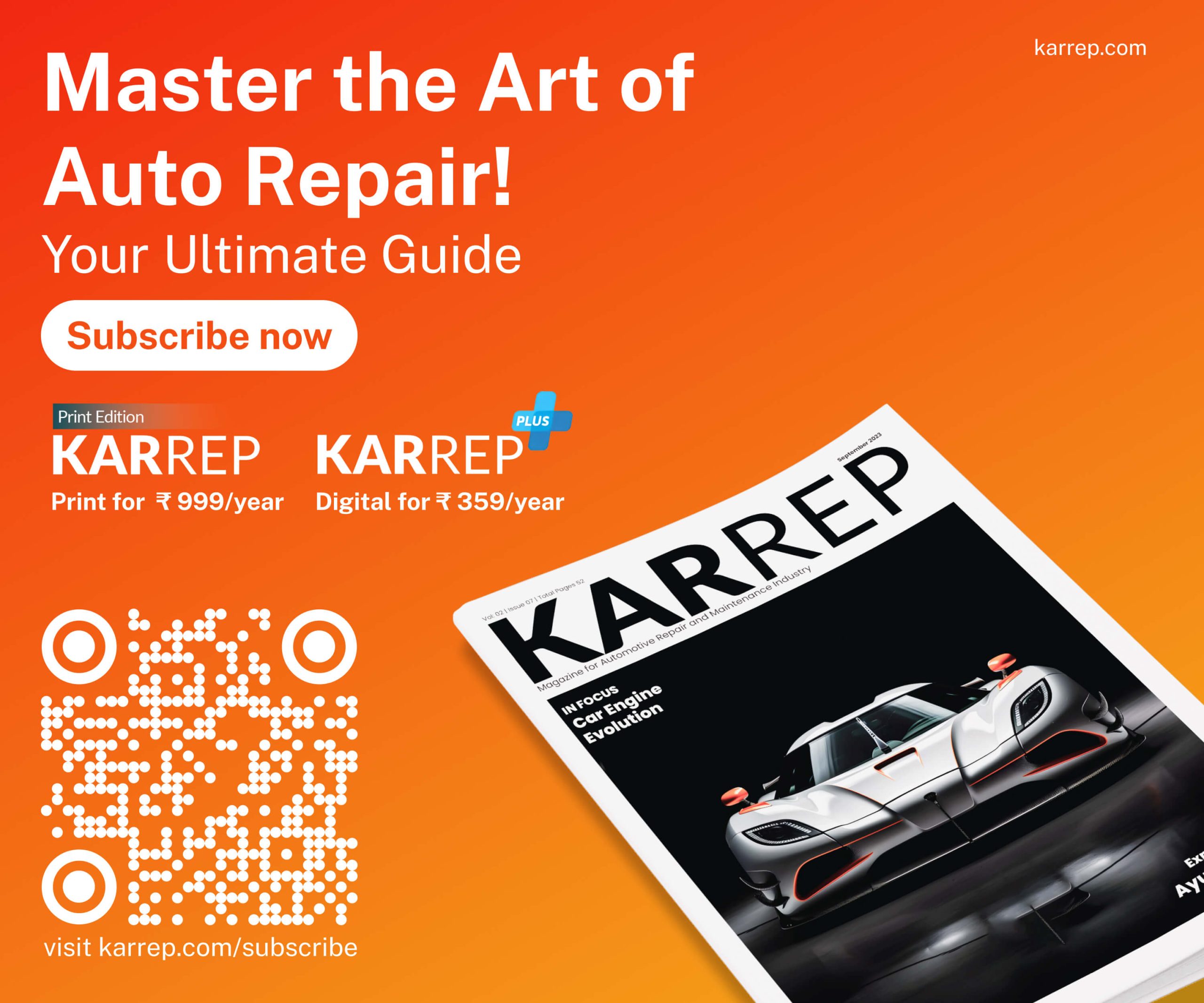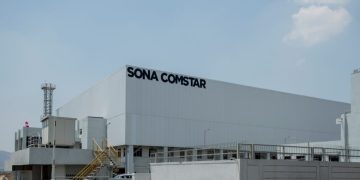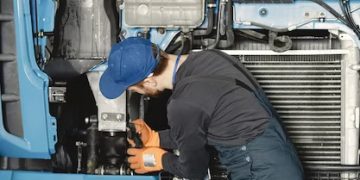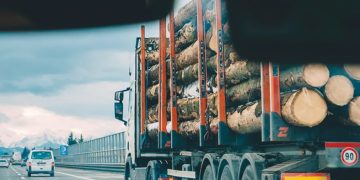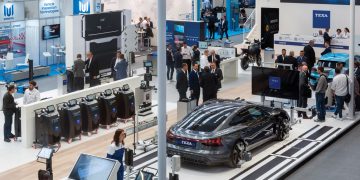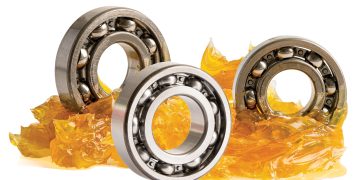Welding plays a crucial role in numerous industries and trades and is especially significant in the automotive sector, particularly in auto body repair. Skilled tradespeople rely on welding to join various car parts together, and the quality of the welds is a critical factor in the final outcome of the work. Strong and clean welds not only enhance the vehicle’s appearance but also ensure its reliability on the road. In this article’s second part, we will discuss the equipment used for welding and cutting in the automotive repair industry.
Welding and Cutting Equipment
In general, an oxyacetylene welding and cutting outfit as shown in the figure before, consists of the following:
□ Steel tanks (cylinders)
Filled with: Oxygen Acetylene.
□ Regulators
That reduce the pressure coming from the tanks to the desired level and maintain a constant flow rate of Oxygen pressure: 15 to 100 psi (103 to 689 kPa), Acetylene: 3 to 12 psi (21 to 83 kPa).
□ Hoses
From the regulators and cylinders connect the oxygen and acetylene to the torch.
□ Torch
The torch body mixes the oxygen and acetylene from the tanks in the proper proportions and produces a heating flame capable of melting steel. There are two main types of torches:
- Welding torch
- Cutting torch
The low-pressure torch is generally used for acetylene welding. This torch can be used at an extremely low acetylene pressure and has an injector nozzle. The gases are mixed by the discharge of oxygen from the center nozzle. The cutting torch has an oxygen tube and valve for conducting high-pressure oxygen attached to a welding torThe flame outlet has a small oxygen hole located in the centre of the tip that is surrounded by holes arranged in a spherical pattern. The outer holes are used for preheating.
Types of Flames
When acetylene and oxygen are mixed and burned in the air, the condition of the flame varies depending on the volume of oxygen and acetylene. There are three forms of flame:
- Neutral flame
The standard flame is said to be a neutral flame. Acetylene and oxygen mixed in a 1 to 1 ratio by volume produces a neutral flame.
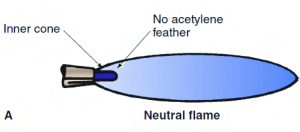
As shown:
Figure-22: Natural flame 1:1 ratio
This flame has a brilliant white cone surrounded by a clear blue outer flame.
- Carburizing flame
The carburizing flame, also called a reduction flame, is obtained by mixing slightly more acetylene than oxygen.
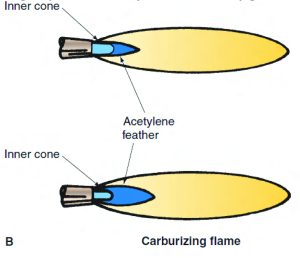
The cone and the outer flames are the same as the neutral flame, but between them there is an intermediate, light-coloured acetylene cone enveloping the cone.
The length of the acetylene cone varies according to the amount of surplus acetylene in the gas mixture.
For a double reduction flame, the oxygen–acetylene mixing ratio is about 1 to 1.4 (by volume).
A carburizing flame is used for welding aluminum, nickel, and other alloys
- Oxidizing flame
The oxidizing flame is obtained by mixing slightly more oxygen than acetylene. (Figure-24)
The oxidizing flame resembles the neutral flame in appearance, but the acetylene cone is shorter and its color is a little more violet compared to the neutral flame. The outer flame is shorter and curly at the end.
Ordinarily, this flame oxidizes melted metal, so it is not used in the welding of mild steel, but it is used in the welding of brass and bronze.
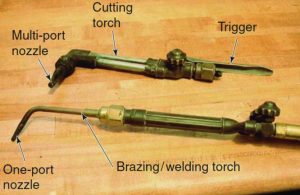
Figure-25: Gas cutting and welding torches
NOTE:
When start using open the oxygen first, then the acetylene then light it up, in finishing do it reversely, close the acetylene first then close the oxygen. By this way you can clean the tubes by oxygen and prevent backfire from acetylene. And always try to adjust the torch from oxygen (mixing ratio).
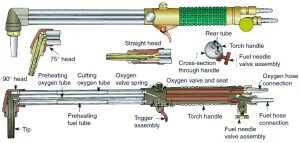
Gas Cutting Torch
The cutting torch is sometimes used in collision repair shops to rough cut damaged panels. Gas cutting torch flame adjustment and cutting procedures are as follows:
□ Adjust the oxygen and acetylene valves for a preheating neutral flame.
□ Open the preheating oxygen valve slowly until an oxidizing flame appears. This makes it difficult for melted metal to remain on the surface of the cut panel, allowing for clean edges.
□ Thick panel cutting method.
Heat a portion of the base metal until it is red hot. Just before it melts, open the high-pressure oxygen valve and cut the panel. Advance the torch forward while making sure the panel is melting and being cut apart.
This method is widely used for thick panels when there are several pieces overlapped together or for a side member, even when there is an internal reinforcement.
□ Thin panel cutting method. Heat a small spot on the base metal until it is red hot. Just before it melts, open the high-pressure oxygen valve and incline the torch to cut the panel. When cutting thin material, incline the tip of the torch so that the cut will be clean
Brazing
Brazing is a metal-joining process in which two or more metal items are joined together by melting and flowing a filler metal into the joint, the filler metal having a lower melting point than the adjoining metal.
Brazing is applied only to places for sealing.
This is a method of welding in which a nonferrous metal with a lower melting point (temperature) than that of the base metal is melted without melting the base metal. Brass brazing is frequently applied to automotive bodies. Brazing is similar to joining two objects with adhesives; melted brass sufficiently spreads between the base metals to form a strong bond.
Braze joint strength is less than that of the base metal, but the same as the melted brass.
Therefore, never use brazing as a structural joint unless recommended by the vehicle manufacturer.
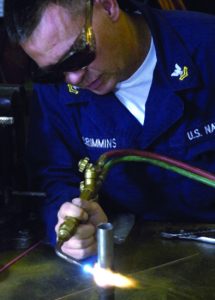
Figure-27: Braze welding
There are two types of brazing:
□ Soft brazing (weld iron)
□ Hard brazing (brass or nickel)
Ordinarily, the term brazing refers to hard brazing.
The basic characteristics of brazing are:
- The pieces of base metal are joined together at a relatively low temperature so that the base metal does not melt. Therefore, there is a lower risk of distortion and stress in the base metal.
- Because the base metal does not melt, it is possible to join otherwise incompatible metals.
- Brazing metal has excellent flow characteristics; it penetrates well into narrow gaps and it is convenient for filling gaps in body layers.
- Because there is no penetration and the base metal is joined only at the surface, it has very low strength to resist repeated loads or impacts.
- Brazing is a relatively easy skill to master. Automobile assembly plants sometimes use arc brazing to join the roof and quarter panels.
In the body shop, the brazing equipment is usually about the same as oxyacetylene welding. For brazing, an oxyacetylene torch, brass filler rods, flux welding goggles, gloves, and a torch lighter are needed.
Although the oxyacetylene torch can be used in soft brazing (soldering), it is best to use one designed specifically for soldering.
A brazing material with good qualities, such as flow characteristics, melting temperature, and compatibility with base metal and strength, is made of two or more metals that form an alloy.
Copper and zinc are the main ingredients of the brazing rods used on auto bodies.
General Brazing Procedure is as Follows:
□ Cleaning the base metal. If there is oxidation, oil, paint, or dirt on the surface of the base metal, clean the surfaces before brazing. These contaminants, if allowed to remain on the surface, can cause eventual joint failures. Even though flux acts to remove oxidized film and most contaminants, it is not strong enough to completely remove everything. Therefore, first clean the surface mechanically with a wire brush.
□ Flux application. After the base metal is thoroughly cleaned, apply flux uniformly to the brazing surface.
□ Base metal heating. Heat the joining area of the base metal to a uniform temperature capable of accepting the brazing material. Adjust the torch flame so that it is a slight carburizing flame. By watching the melting flux, you can estimate the proper temperature for the brazing material.
□ Base metal brazing operation. When the base metal has reached the proper temperature, melt the brazing material onto the base metal, let the braze metal flow out naturally.
Stop heating the area when the brazing material has flowed into the gaps of the base metal.
Note in brazing there is a powder using to eliminate the splash of cooper and make it soft surface welding.
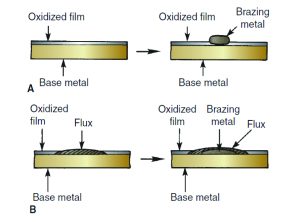
Figure-29: A- Without flux, B- With flux, soft welding
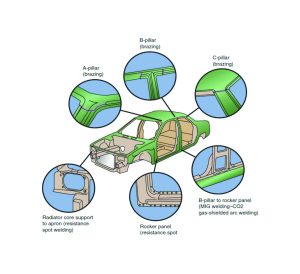
Figure-30: Welding methods used in vehicle production
Source:
Auto Body Repair Technology

BASHEER ALATAWNEH
Business Development Manager
JoClaims
Amman – Jordan


